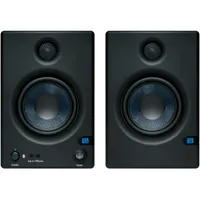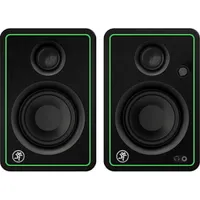Best budget studio monitors 2025: Make your mix sing with these wallet-friendly home studio speakers
The best cheap studio monitors for home recording, with my hand-picked and affordable options from Adam, IK Multimedia, M-Audio, PreSonus and more
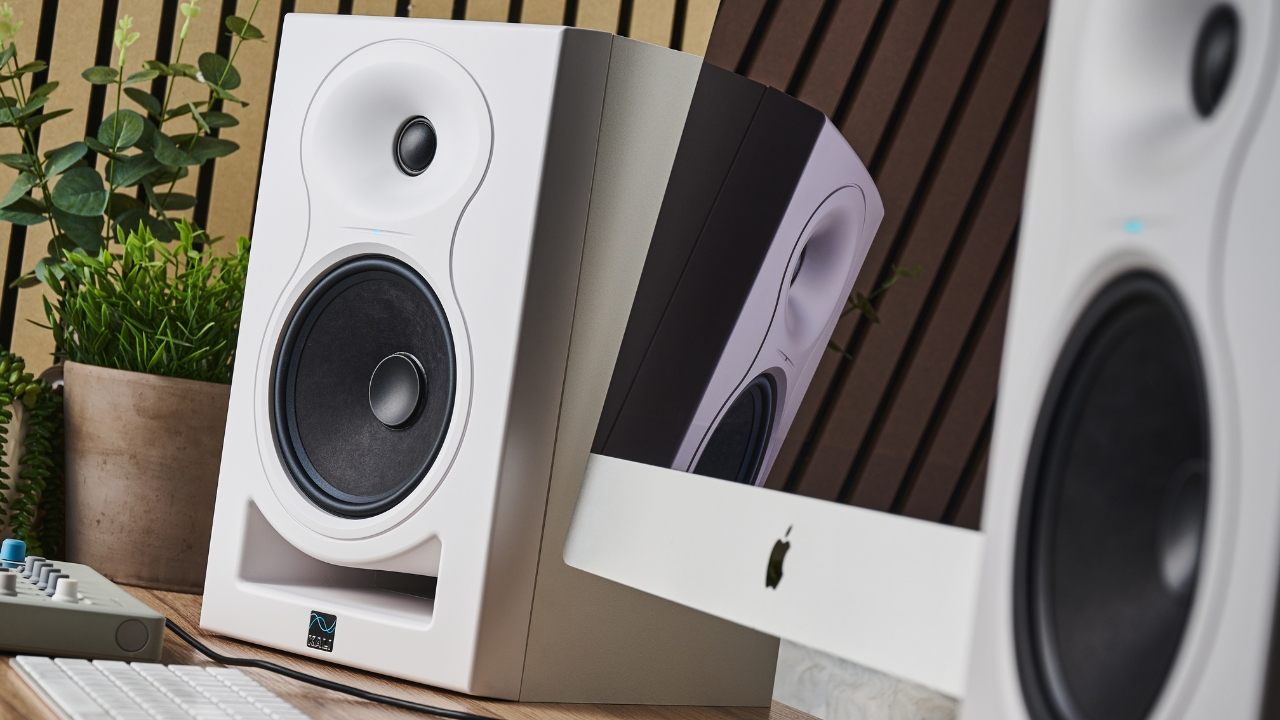
Studio monitor speakers are a non-negotiable lynchpin of any studio environment, whether a professional control room or your home studio space. Despite how far a decent pair of headphones can get you, there’s nothing to match the experience of mixing on decent speakers in the room. While there are many sets that cost the earth, you don’t need to spend the earth to get your hands on some truthful, representative monitors. As far as the best budget studio monitors go, though, which should you go for?
Over the last 17 years, alongside the MusicRadar team I've reviewed countless pairs of studio monitors. That makes me a true authority on what makes a great studio monitor, as well as giving us an excellent insight into what's really good value for money out there.
It should go without saying that, at the budget end of the range, some sacrifices are made against top-shelf reference speakers – but I’ve separated our picks by category, so you can ensure your budget pick is also right for your specific needs.
Overall, I don't think it gets much better than the Adam Audio T5Vs if you can stretch your budget to the £/$350 mark. They deliver superb sound with plenty of connectivity options for relatively little money. If you want the cheapest studio monitors possible, you should check out the PreSonus Eris 3.5s, which unbelievably are available for less than £/$100 for a pair.
I've put together a comprehensive FAQ section alongside the MusicRadar team for those who like to do their research before buying. You’ll also find a how to choose section further down the page if you’re buying for the first time. To get to my top picks of the best budget studio monitors, just keep scrolling…
Looking to make music gear savings this Black Friday? Shop our handpicked selection of the best Black Friday music deals.
My top picks
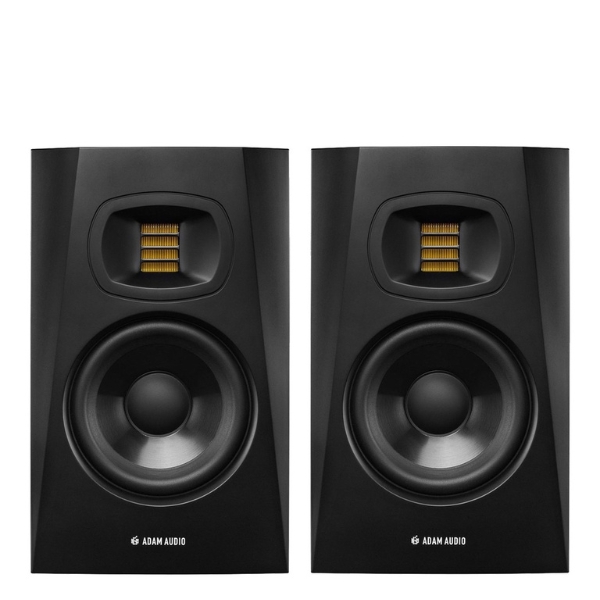
They may be stretching your budget, but the Adam Audio T5Vs will give you crystal-clear monitoring and excellent connectivity at a price well below the $500 mark for a pair.
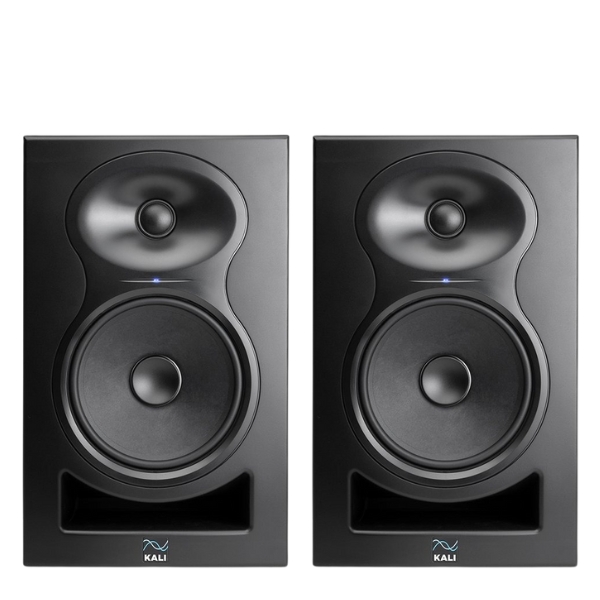
In my opinion perfectly balancing the performance versus price ratio, the Kali Audio LP-6 V2 are the perfect budget studio monitors for serious mix engineers. They're not the cheapest on this list, but their neutrality is fantastic.
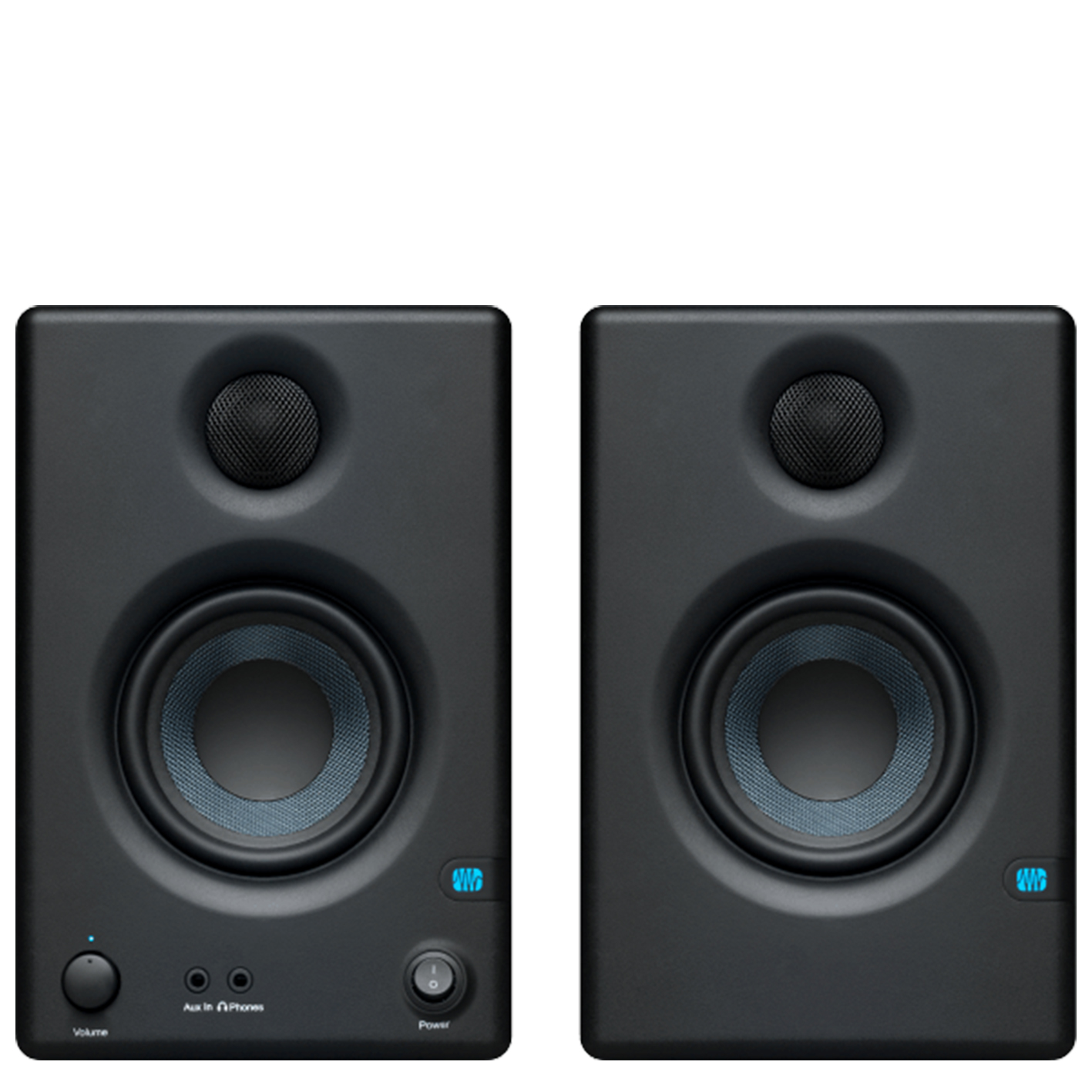
Yep, you read that right. The PreSonus Eris E3.5s come in at below $100 for a pair, making them insane value for money. Don't let the price tag fool you either, they sound phenomenal.
Best overall
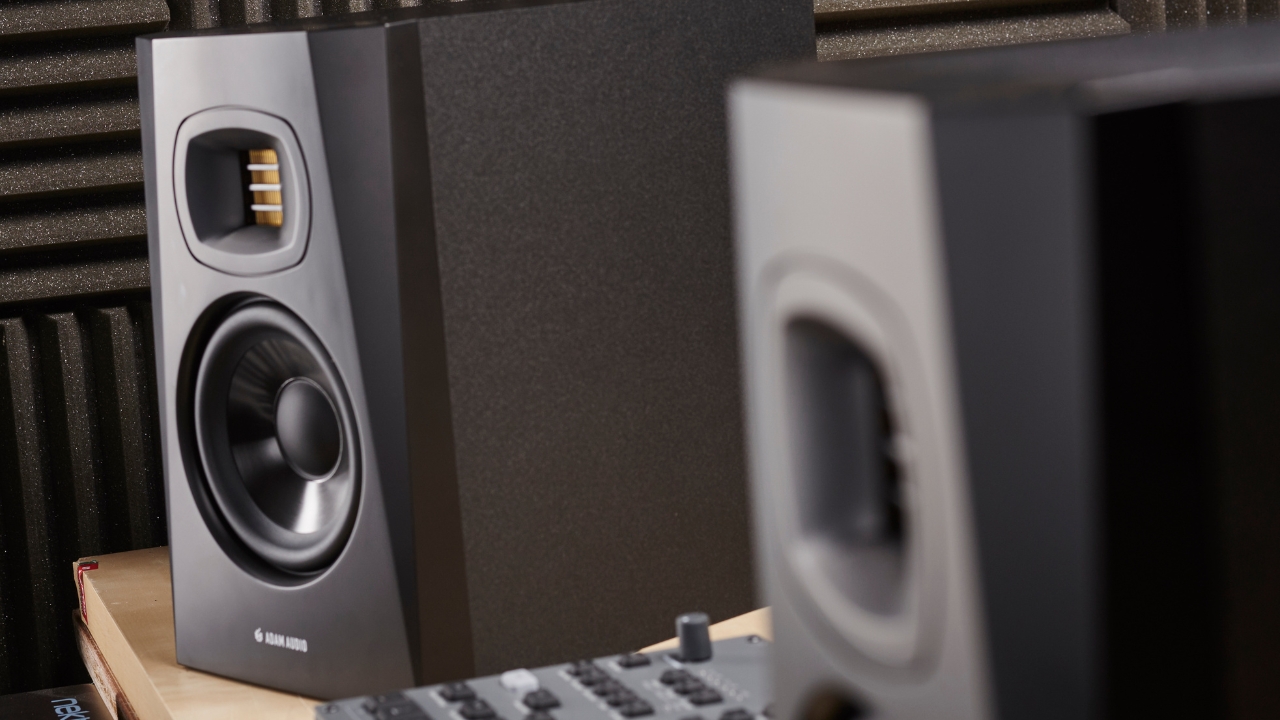
Specifications
Reasons to buy
Reasons to avoid
🔊 If you want the best overall studio monitor for mixing and making music and you're not on a shoestring budget, the Adam Audio T5V is our top pick. With a 5-inch driver and great sounding Ribbon tweeter it delivers superb uncoloured sound that'll help you make those mixes shine.
✅ Buy if you value sound quality: They're stretching the margins of a budget monitor, but they deliver superlative sounds that will massively help improve your mixing.
❌ Avoid if your budget is tight: Costing around $350 for a pair, there are much cheaper options available in this guide.
Overview: If you can stretch your definition of budget, a larger and more expensive speaker will deliver some serious benefits to the quality of your mixes. In fact I'd wager that it's much better to wait and save more money for precisely this reason. Coming in well below $500 for a pair, the Adam Audio T5Vs are a fantastic studio monitor for home studio work.
Build quality: They’re narrow in terms of width for a 5-inch monitor but are quite deep speakers front to back, so not best suited to a compact setup where desk space is at a premium. It’s a rear-ring bass reflex design, with all the controls on the back panel and strangely in my opinion, a rear-mounted power LED light. Overall though the build quality is incredibly robust, and they certainly feel up to the task of regular home studio work.
Sound: With a 5-inch woofer and Adam Audio’s ‘Unique Accelerated Ribbon Tweeter’, these speakers deliver a beautifully tuned top-end with a wide sweet spot for listening.
The overall imaging is fantastic when you sit between a pair, and I loved the stereo separation. The low mids do feel slightly obscured, but this can remedied by adjusting the low-frequency EQ. Overall if you're looking to get good mixes on a budget, I don't think you can do much better than these.

"I reckon I could get used to the T5V in any of the three HF settings, indicating that, to my ears, the overall top end is very well tuned. As noted in the S2V review, the HPS waveguide delivers a broad horizontal sweet spot but is more restricted vertically. This is the same for the T5V and contributes greatly to the overall imaging and separation, which is excellent."
Read more: Adam Audio T5V review
Test | Results | Score |
|---|---|---|
Build quality | Excellent, robust | ★★★★★ |
Connectivity | No digital connectivity | ★★★★☆ |
Sound | Very clean and balanced | ★★★★★ |
Best for mixing

Specifications
Reasons to buy
Reasons to avoid
🔊 If you're not using your monitors for anything other than mixing and mastering, we'd go for the Kali LP-6 V2. They deliver an amazing clarity of sound that's ultra transparent, making them an excellent partner in the quest for mixes that translate everywhere.
✅ Buy if you want accurate mixing: The 6.5-inch drivers give you a much bigger scope for mixing, with a transparent and characterless delivery.
❌ Avoid if you want good looks: The design of the LP-6 V2 is a little plain, and the lack of matching sub for the white version will disappoint some.
Overview: The second iteration of Kali Audio's classic budget monitor comes with several improvements on the originals, including a 12dB reduction in self-noise, a thinner, paper woofer for a faster transient response, and an improved amplifier for better high-frequency tuning. It's a lot of studio monitor for a relatively low cost, with a pair coming in around the $/£400 mark.
Build quality: The LP-6 V2 probably isn't going to win any design awards, but that's not to say the build quality isn't there. The style-conscious might be disappointed by the lack of a matching sub for the white version though. In terms of build it's a MDF construction that feels very robust and there's a light texture to the vinyl wrap I could feel with my hand.
They're front-ported, which means you can place them close to a wall which will suit a lot of small studio owners. It's well made of that there's no doubt, with a tidy build that's solid if unspectacular in terms of looks.
Sounds: The response of the LP-6 V2 is very flat considering the price, and although I noticed a slight dip around the 700-900 Hz mark, overall it delivers an honest tone when it comes to your mixing. The low self-noise adds to its excellent mixing characteristics, and I didn't find any issues with the front port like extra noise or compression during my testing.
With eight boundary EQ settings, you can easily customize the response for your particular needs too, whether your monitors are going to go on stands, right up against a wall, or further away from a wall. I found the DIP switches to operate these are a bit fiddly, but in combination with the high and low frequency trim pots, there's enough flexibility to ensure you're getting the very best sound for your particular space.

"The LP-6’s response curve is pretty flat, with a slight dip at 700-900Hz, which is why I heard little character, just an accurate, transparent tone. Exactly what I look for in mixing. A great choice for mixing on a budget, the LP-6 is a super monitor that’s impressively quiet, accurate and characterless."
Read more: Kali Audio LP-6 2nd-Wave review
Test | Results | Score |
|---|---|---|
Build quality | Solid but unspectacular | ★★★★☆ |
Connectivity | Covers most bases | ★★★★½ |
Sound | Ultra transparent | ★★★★★ |
Best budget

Specifications
Reasons to buy
Reasons to avoid
🔊 For those who really don't have much to spend, the Eris E3.5s are accessible for pretty much anyone. Used in conjunction with a pair of headphones you'll definitely be able to do some good quality mixes on these without having to spend loads.
✅ Buy if you need the cheapest studio monitors: At less than $/£100 for a pair, the Eris 3.5s are the cheapest way to get into mixing music.
❌ Avoid if you want low-end: Smaller speakers are unable to reproduce the low end as accurately, so these aren't a great choice for bass-heavy styles.
Overview: If your recording journey has started with you using headphones or speakers in your laptop, the PreSonus Eris E3.5 will provide an instant upgrade. These affordable studio monitors offer a variety of connections, and the onboard EQ correction is superb to find at this price point.
Build quality: With just a 3.5-inch driver these studio monitors are nice and compact, so well suited to those smaller rooms or setups where space is at a premium. You're still getting a Kevlar driver though which is excellent value for money.
As these are at the cheaper end of the spectrum they run a similar format to computer speakers, with the amp in the left speaker and a connecting cable to power the one on the right-hand side. This could be a plus or minus depending on your setup, but the fact they only take up a single power socket will be useful for those desks where space is at a premium.
Sound: I found the Eris E3.5 monitors pull a fairly reasonable amount of low-end out of the small 3.5" speakers, even with the LF range only extending as far as 80Hz. There is a lack of low-end clarity in certain areas, but as an upgrade from headphones or laptop speakers, the Eris 3.5's fit the bill happily.
During my review process, we found that the Eris' are not quite so capable at higher volumes. For a shade under $/£100 though, the quality is still exceptionally impressive - meaning that these monitors are well worth it if you're on a super tight budget.

"Overall there is detail here – even low down – that again you shouldn't really expect for speakers of this size and (especially) price. The soundstage is wide and clear which helps you position your music when mixing and give a sense of space when listening."
Read more: PreSonus Eris E3.5 review
Test | Results | Score |
|---|---|---|
Build quality | Fantastic feel | ★★★★★ |
Connectivity | No XLR in | ★★★★☆ |
Sound | Lacking low-end in places | ★★★★☆ |
Best compact
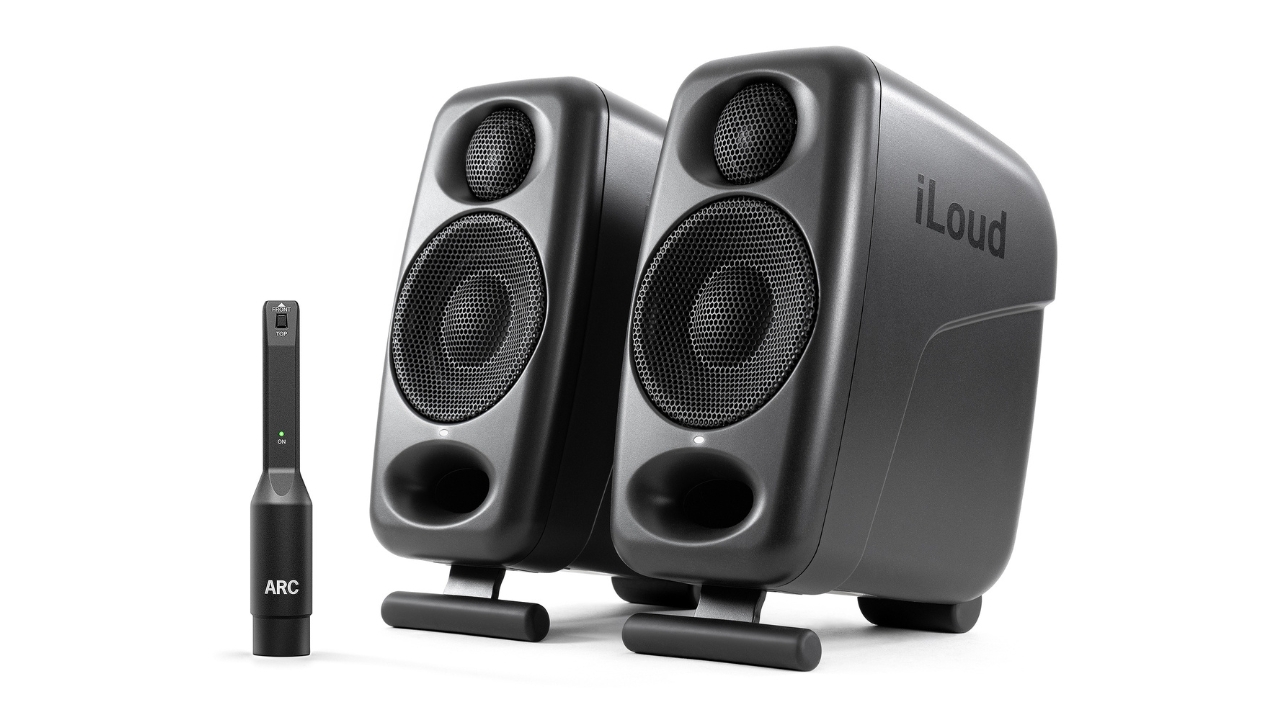
Specifications
Reasons to buy
Reasons to avoid
🔊 If you're short on space on your desk but still want plenty of volume, the IK Multimedia iLoud Micro Monitor Pro is a great choice. At just 206mm high and 106mm across, you'll be able to fit these small studio monitors into pretty much any setup.
✅ Buy if you don't have a lot of space: I love the compact size of these, which makes them great for smaller rigs. With a combined power of 100W RMS, you won’t be lacking in volume either.
❌ Avoid if you want low-end: While these are impressively beefy for their size, those small drivers are unavoidably less equipped for low-end than larger monitor speakers.
Overview: IK Multimedia have, in so many words, revolutionised the small-speakers space with respect to music-making. Previously, portable studio monitors were tinny gimmicks, and no real substitute for larger sets more capable of reproducing meaningful lows and mids. With the iLoud series, IK Multimedia has changed the game – and the iLoud Micro Monitor Pros are further proof.
These are a pro-grade upgrade to the IK Multimedia iLoud Micros, which I had a lot of love for the first time around.
Build quality: Amongst the many things that push these new pro micro-monitors to the next level are the upsized 1” tweeters, the addition of XLR inputs on the rear, and the small feat of doubling power output to 50W RMS per speaker. That a monitor speaker this small has a toggleable 80Hz high-pass filter I found at once hilarious and brilliant.
Sound: The Micro Monitor Pro delivers a surprisingly large sound for its size, with the bass port doing a lot of heavy lifting here. I found it flattered the bass spectrum a little too much for my taste, giving you a punchy sound but slightly obscured low mids. The actual mid-range content is fantastic though, delivering a sound that you can definitely mix with.
These micro monitors can also be calibrated, courtesy of IK Multimedia’s ARC room correction cleverness. If you buy a bundled pair, you get an ARC microphone which plugs into the rear, and enables your monitors to tune themselves to your space at the click of a button. This is on top of all the digital X-MONITOR EQ calibration you can do via the USB-C ports on each unit. All this cleverness, and in such a small package; mixing has never been so viably portable.

"Overall, the iLoud Micro Monitor Pro is quite an achievement. There is plenty of tech crammed into a small space, and coupled with the room calibration and support software, it makes for the most flexible mini monitor I’ve tried. They’re not the cheapest, but all in all, offer excellent value."
Read more: IK Multimedia iLoud Micro Monitor Pro review
Test | Results | Score |
|---|---|---|
Build quality | Fantastic build | ★★★★★ |
Connectivity | Covers most bases | ★★★★☆ |
Sound | Lacking a little in the low-end | ★★★★☆ |
Best for electronic production

Specifications
Reasons to buy
Reasons to avoid
🔊 KRKs are the go-to for a lot of electronic music producers, so if you like a little hype in your mixes these are a great shout. They're also really versatile with their multiple modes, so you can use them for casual listening too.
✅ Buy if you want loads of bass: KRKs are well known for their low-end reproduction, which makes them the monitor of choice for hip-hop and certain styles of EDM.
❌ Avoid if you want neutral tones: More suited to production tasks, the KRKs don't have the most neutral sound so can skew your mixes a certain way.
Overview: The Rokit 5 G5s are very much similar in form and format to the RP5 G4s that came before (and which held this very place for best budget studio monitors last time round). These budget beat-maker facilitators remain a powerful tool in any producer’s arsenal, particularly with these fab quality-of-life upgrades.
Build quality: A new transducer and 1” silk-dome tweeter collectively work wonders for the Rokit 5 G5’s responsiveness and high-end representation, making for a silkier experience overall. Meanwhile, on the DSP side of things, the Rokit 5 G5 now benefits from three different preset voicings you can switch between with relative ease.
Sounds: As is typically the case with KRK speakers, I found they have plenty of low-end heft but the new silk dome tweeter really enhances the high-end. I didn't have to shift them much from the flat EQ setting they came with either, which is a nod to just how good these monitors are.
The Mix voicing is the flattest of the three, and better served for hearing the naked truth of your works-in-progress; the Focus voicing gives a decent mid-hump to proceedings, making it easier to process voice recordings and foley; lastly, the Create mode puts the Rokits at their bass-heavy, club-thumping best for casual listening.

"The Rokit 5 Generation Five is ideal for smaller rooms and spaces and also suitable for surround applications. The new soft dome tweeter adds finesse to the top end and although there is plenty of scope to apply EQ, I really didn’t feel the need to move that far from the factory flat setting, which is very encouraging. Overall, this is a great speaker and should definitely be on your audition shortlist."
Read more: KRK Rokit 5 G5 review
Test | Results | Score |
|---|---|---|
Build quality | Rock solid | ★★★★★ |
Connectivity | Good selection | ★★★★☆ |
Sound | Hypes the low end | ★★★★☆ |
Best for guitar
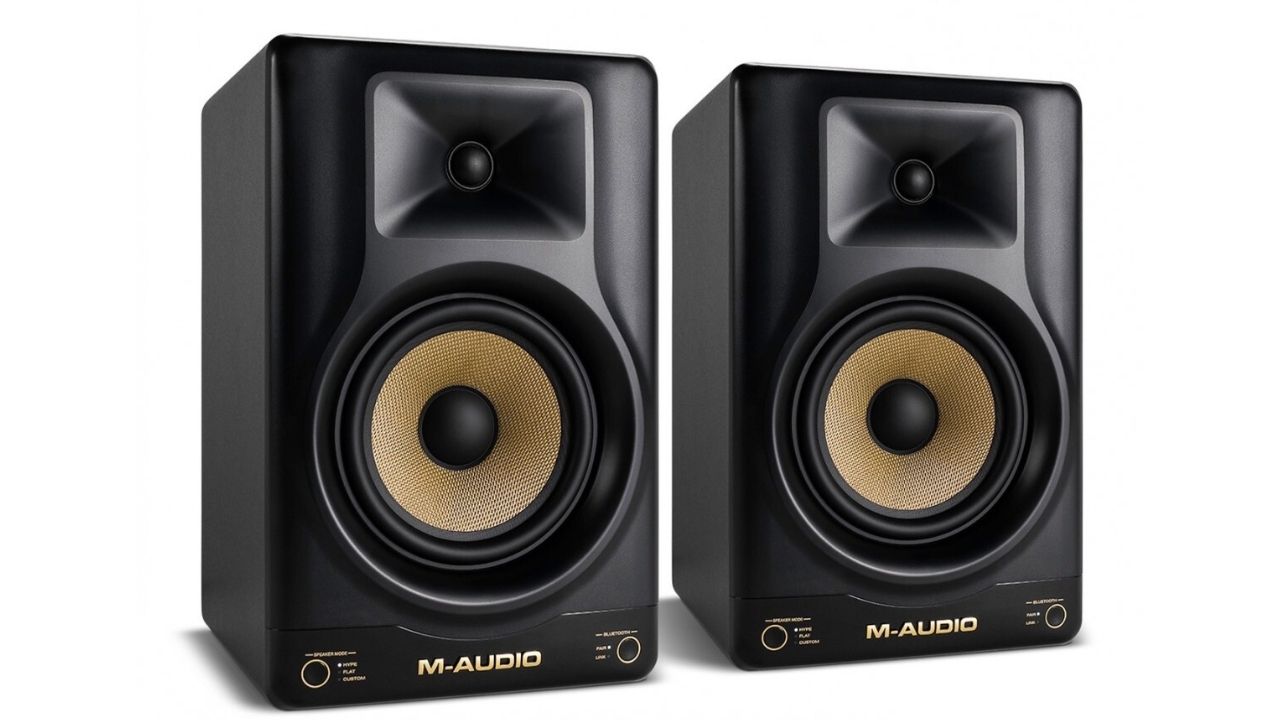
6. M-Audio Forty Sixty
Our expert review:
Specifications
Reasons to buy
Reasons to avoid
🔊 Guitarists will love these monitors thanks to their huge power rating and large woofer. This means you can get a lot of volume out of them, helping them replicate the characteristics of a cranked guitar amp with your amp modeler.
✅ Buy if you record and play in the same space: The Forty Sixty are incredibly versatile, and begging to be used as both your reference monitors and your casual-practicing.
❌ Avoid if you want precision: While there’s plenty of EQ settings to dig into, there’s an imprecision to the Forty Sixty that make them a little less ideal for serious mix engineers.
Overview: The M-Audio Forty Sixty are part of a new range from the audio-equipment stalwarts, and part of a new direction too. With their tasteful black-and-gold fascia and versatile applicability, they’re a thrilling budget option for the multi-hyphenate producer, guitarist, and all-round music fan.
Build quality: The Forty Sixty are quietly thrilling in a few ways, from their highly variable and digitally tweakable frequency responses to the simplicity with which you can switch things up for different listening purposes.
There’s a button on the front that gives you instant access to the Forty Sixty’s ‘hype’ mode, for instance – a colourful, hi-fi-esque and highly flattering EQ mode for more casual listening or testing your mixes the fun way.
For me the beginner-friendliness of these budget studio monitors is further illustrated by their Bluetooth connectivity, altogether making the Forty Sixty an interesting acknowledgement of today’s music production environment. If ‘vibes’ could be a set of monitors, this is what they’d look like.
Sound: They can get pretty loud, which is great if you want an amp-like experience from your guitar playing. I pushed them pretty hard and it was difficult to get them to distort even at high volume levels. With a 6.5-inch woofer, you get plenty of bass response too, which lends a full tone to any amp model.
They work really nicely for mixing duties too, providing an excellent response in the high end with cymbals and vocals sounding very clear without becoming harsh. So although I've recommended these for guitarists, they will absolutely do the job if you're mixing in the box too.
Test | Results | Score |
|---|---|---|
Build quality | Very solidly built | ★★★★★ |
Connectivity | Loads of options | ★★★★★ |
Sound | Not the most transparent here | ★★★★☆ |
Spec comparison
Here you'll find a quick way to compare all of our top picks against one another. Whether you're looking for the largest driver size on a budget or the most power, this table lays everything out for you in one handy place.
Model | Frequency response | Tweeter | Driver | Power per monitor |
|---|---|---|---|---|
Adam Audio T5V | 45Hz–20kHz | 1.9" | 5" | 70W |
Kali Audio LP-6 V2 | 39Hz–25kHz | 1” | 6.5” | 80W |
PreSonus Eris E3.5 | 80Hz–20kHz | 1” | 3.5” | 25W |
IK iLoud Micro Monitor Pro | 42Hz–22kHz | 1” | 3” | 50W |
KRK Rokit 5 G5 | 43Hz–40kHz | 1” | 5" | 55W |
M-Audio Forty Sixty | 39 Hz - 22 kHz | 1” | 6.5” | 100W |
Also consider
For me, the above budget studio monitors should do the job for most music-makers out there. If you didn't find what you were looking for however, here are some more monitors we've reviewed for your consideration.
PreSonus Eris E5 BT
53Hz - 22kHz | 5.25” driver | 1” silk dome tweeter
Although the name might make the E5s sound like they’re not much of a step up front the existing E4.5s, in actuality each E5 BT produces 50 Watts per speaker, considerably more than the 25 watts of the E4.5. The 5.25” LF driver also delivers much better bass extension with overall frequency response of 53Hz to 22kHz. What’s more, and this is something which is specific to the E5 BT, you also have a handy summed mono subwoofer output, making a 2.1 set-up very simple to achieve.
★★★★½
Read more: PreSonus Eris E5 BT
M-Audio BX5 D3
52Hz – 35kHz | 5” driver | 1” silk dome tweeter
During our testing of the BX5 D3's, we found them to have an incredibly wide frequency range for the price you pay, as well as other useful first-timer features such as room correction - and even a nifty built-in LED light to ensure you have them set up at the right angle for your ears.
★★★★½
Read more: M-Audio BX5 D3 review
Mackie CR3 XBT
70Hz – 20kHz | 3” driver | 3/4” silk dome
We found that the Mackie CR3-XBT monitors hit that sweet balance between price and performance, and offering a great selection of input options, including Bluetooth, with features like a wide frequency range and solid build quality, they have a multitude of uses for the modern producer and music listener.
★★★★½
Read more: Mackie CR3 XBT review
Alesis Elevate 5 MKII
56Hz – 20kHz | 5" driver | 1” silk dome tweeter
When I tested these with reference listening in mind, we found that the 40 watts that the 5" driver and 1" high-frequency tweeter kicked out were more than adequate when mixing in a smaller room - but not so much when we expanded into a larger space. This will be no problem for the typical bedroom producer though, with the power on offer being more than enough for most.
★★★★☆
Read more: Alesis Elevate 5 MKII
How to choose
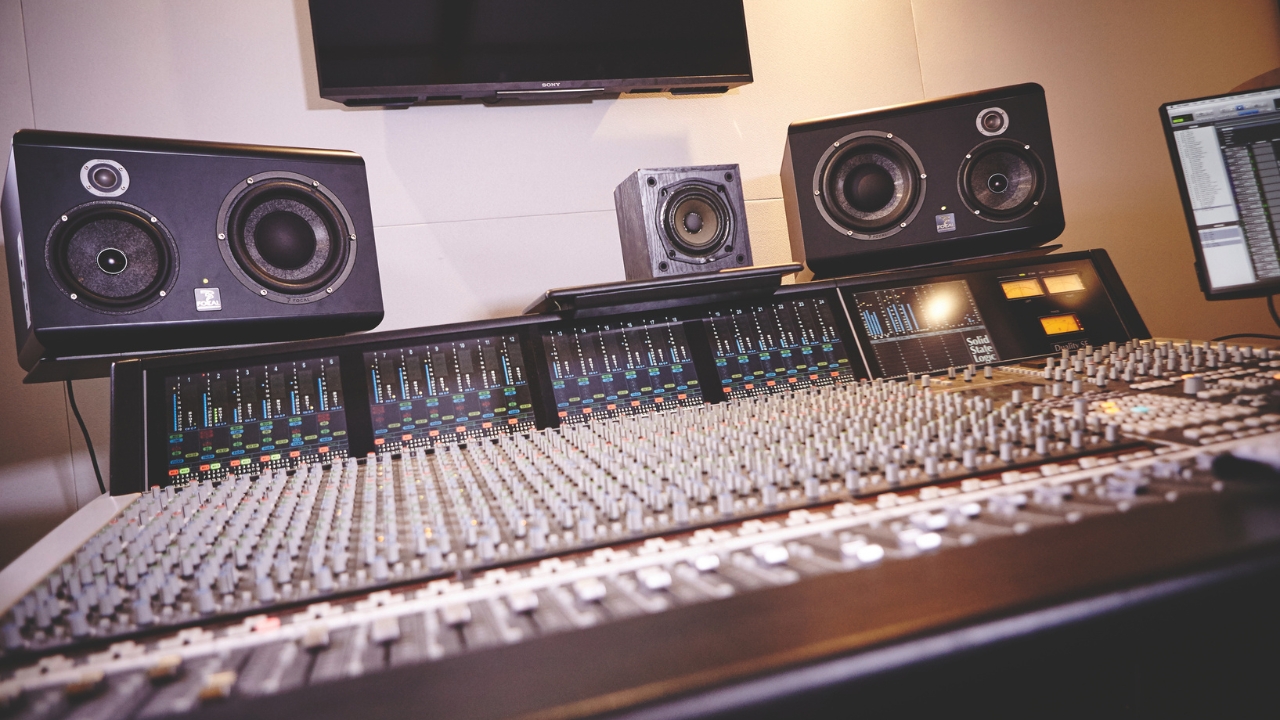
If you're buying for the first time and are a little confused about what you should be going for, don't worry, I've got you covered. I've been using studio monitors for well over twenty years both at home and in professional recording environments, and I've put together this quick start guide for you to get you up and running.
1. Consider your space
MusicRadar's got your back
Your foremost consideration when buying a pair of budget studio monitors should be the space you're going to be mixing or recording in. There's little point putting an 8-inch monitor in a broom cupboard and similarly, 3-inch monitors aren't going to do the job if your space is a barn conversion.
There's also no way to tell how a monitor is going to sound before you get it into your particular room, as the various surfaces can have a marked effect on the overall tonality. If you can afford it, I'd highly recommend treating your room as much as possible to ensure you get a good sound from your studio monitors.
This can be done relatively cheaply if you're handy with tools, or there are more expensive pre-made panels you can buy too.
2. Monitor size
The smaller the monitor, the less low-end it has, so consider this when you're deciding which monitor to go for. If you're mixing in bass heavy EDM styles, then you'll want something with a bigger driver in order for you to hear the low-end frequencies.
For my money, a 5-inch monitor is the sweet spot for the vast majority of spaces, but admittedly these will be more expensive than a 3-inch monitor.
3. Think about power
As well as different speaker sizes, you should consider power amounts too, which will determine how much detail you can hear. Most of the monitors in this guide are around the 50W mark, and this is usually split in different amounts between the driver and tweeter. It's not just a volume consideration though.
A higher wattage will mean more headroom, which means that you'll be better able to mix dynamic instruments like your kick and snare drums without any clipping. If it's within your budget to go for a monitor that has a higher wattage, then I'd say go for it.
4. The sound
A lot of musicians buy a set of studio monitors and end up disappointed their music doesn't immediately sound amazing on them. This is because what studio monitors are aiming to do is give you a balanced view of your mix. With a good set of monitors and a well treated room you'll be able to hear all the individual details of a mix without any one thing being overpowering.
This is great if you're trying to get your mix to the standards of the professionals, but if you're looking for something for casual music listening you may find studio monitors a little underwhelming.
5. Placement
The number of times I've seen poorly placed studio monitors on Instagram is way too high! Before buying your studio monitors, you should consider that you need to form an equilateral triangle with yourself and your two monitors.
This means you'll need adequate desk space to angle the speakers towards you, and perhaps think about adjusting the height as you want the tweeters to be pointing straight at your ears. This will give you the best possible listening position, which will make it much easier to craft well-translated mixes.
You might need to factor in external monitor stands into your studio setup, and you'll definitely want to buy some foam pads for the monitors to sit on so you can separate them sonically from whichever surface you're playing on.
6. Connectivity
If you're buying a pair of studio monitors, are you considering what you're going to connect them to? Most studio monitors tend to favour XLR or 1/4-inch jack inputs, which means you're not likely to be able to connect them to a laptop or computer without an audio interface.
Some monitors do come with RCA connectors which means you can hook them up direct to a computer, phone, or TV, but it's always wise to check what connections are available before you make a purchase.
FAQs
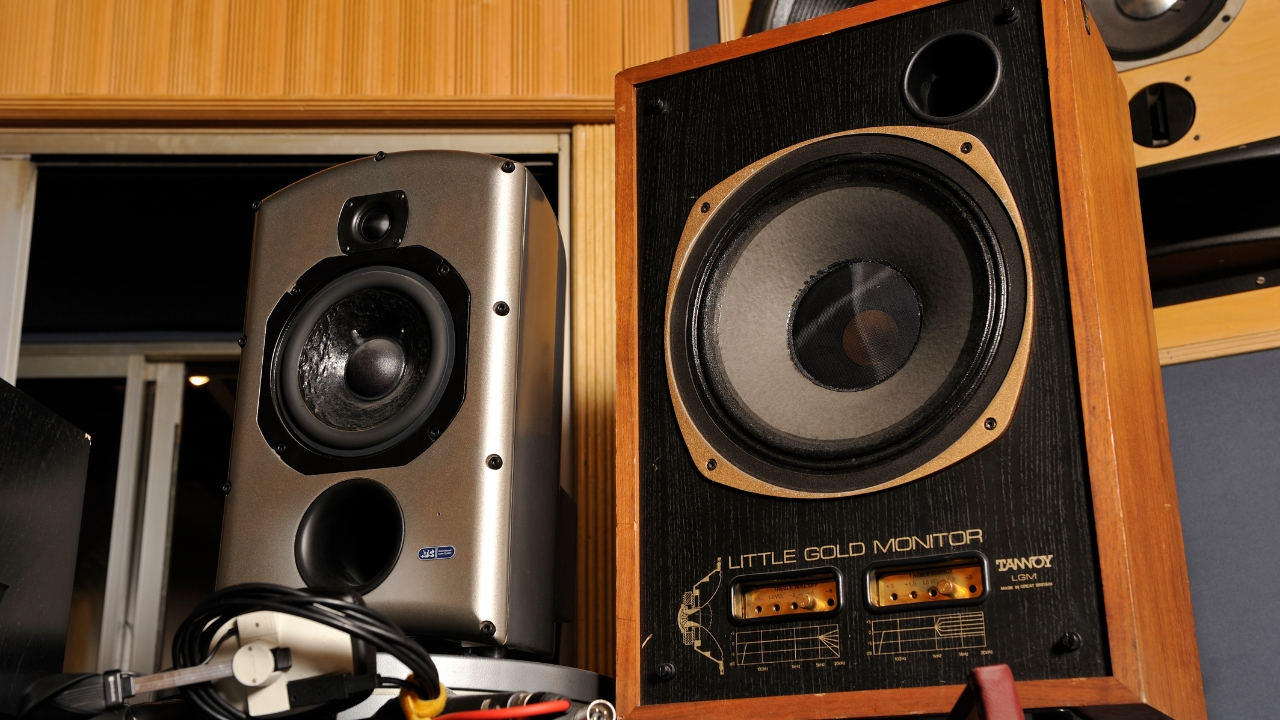
What's the difference between studio monitors and speakers?
This question might seem a little odd at first – after all, studio monitors are quite clearly speakers, on account of the fact they have speaker drivers and reproduce audio from a variety of sources. However, studio monitors are also quite clearly distinct from the killer Bluetooth speaker you might use to stream Spotify or Apple Music. What makes this distinction, and why should you invest in studio monitors if you already have a hi-fi system you like?
Without wanting to sound too blunt, studio monitor speakers don’t exist for your listening pleasure. They aren’t designed to make your recordings sound good the same way consumer hi-fi speaker systems by brands like Bose and Sonos are. Studio monitors are neutral, naked reference systems, there to shine a light on exactly what’s happening in your own music; if the audio you feed into them sounds good, your speakers will too. If not, you’ll soon find out. In short, monitors give you the truth, for better or for worse.
Regular speakers, from the aforementioned Bluetooth type right up to your parent’s prized hi-fi separates, are created differently. They are there to sweeten the audio they’re fed, either through gently boosting bass and treble frequencies or by applying other predefined EQ settings. What’s more, the choice – and age – of the speaker cone itself also has an impact.
Monitor (or reference) speakers differ in that they have no prior agenda. They aspire to serve you audio with a flat frequency response, meaning they produce the sound exactly as it’s received – in the producer’s case, from either your digital audio workstation (DAW), summing mixer, or some other studio audio source.
The benefit of this approach is simple, yet brings with it a ton of complexity. In theory, if you can make your mix sound balanced, clear, and accurate on a set of budget studio monitors, then you can be confident it will sound good on whatever speakers the end-user chooses. This could mean anything from a mobile phone or iPad to a car stereo, or even one of the best PA speakers in a club.
Do I really need studio monitors?
If you're new to the world of home production and recording, then a pair of budget studio monitors is really all that you need. Many of you will have been making do with headphones so far, and may even have found that your mixes are suffering for it a little. Studio monitors enable you to hear your mix in 3D space, and give you a much clearer sense of how left and right are interacting.
As for why you shouldn’t wait a while, and save up for something a little more expensive or studio-grade, there are a couple of answers. Firstly, your budget studio monitors will be more than enough for giving you a real sense of what’s going on in your music. Any further benefits conferred by the clarity of better, more expensive speakers would immediately be mitigated by the likely lack of acoustic treatment in your current studio space – a variable which will do far more to impact your mixes than pretty much anything else.
It is also the case that budget studio monitors are getting really, really good. Like most music tech, the quality of entry-level reference speakers has vastly improved, from better driver designs to ever-evolving DSP cleverness. There's never been a better time to buy, with new products from the likes of IK Multimedia, M-Audio, and PreSonus all making a great impression on us despite their ‘budget’ status.
What is the 38% rule?
The 38% rule is designed to help you find the ideal listening spot for mixing in a room. It's the position that minimized standing waves, ensuring you get a balanced sound from your placement.
You need to start by measuring the length of the room. Once you have that you need to calculate 38% of the room's length, which is easily done via Google. Facing towards the shortest wall in the room, you should place your monitors at that 38% mark for the optimum listening position.
Of course, this isn't possible in every space, but generally it's best to place your monitors against the shorter wall if you have a rectangular space. If you can get at least two feet away from that wall, then even better, but for most people this isn't possible.
Should studio monitors be against a wall?
If your speakers have a rear facing port, then you'll get a much better sound getting them as far away from any walls as possible. There are some monitors like the Kali Audio LP-6 V2 which have a front facing port which can help remedy this, but most monitors have rear facing ones.
If you have to put them up against a wall, then so be it, you can tune monitors using the high and low frequency controls on the back to remedy this somewhat.
Glossary
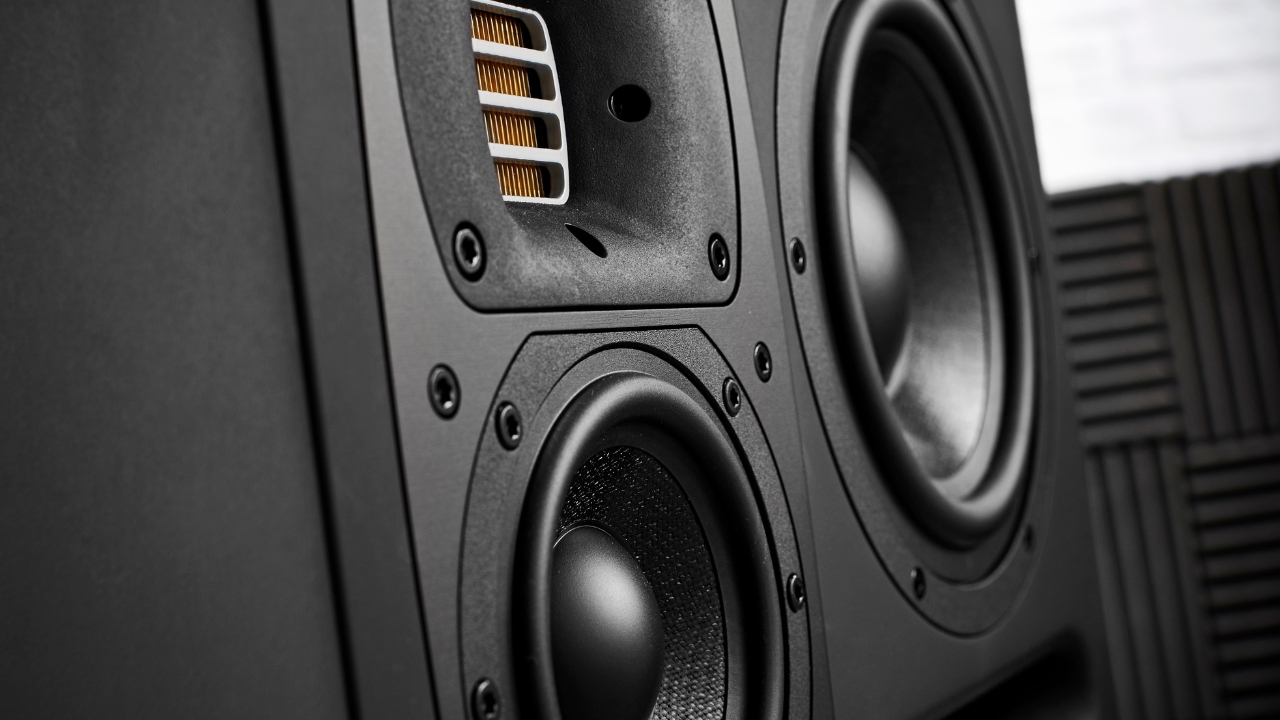
If you're confused about any of the terms flying around in this guide, our handy glossary will have you up to speed in no time.
- Decibel/dB - A measure of sound level, used to describe speaker volume.
- Driver - A component of the speaker that converts electrical signals into sound, monitors typically have two of these for low/mid and high frequencies.
- DSP - Stands for Digital Signal Processing. Usually refers to some sort of room compensation or EQ correction in studio monitors.
- Dynamic range - The difference between the quietest and loudest sounds possible from a studio monitor.
- EQ - A general music term for adjusting the volume of a particular frequency. Sometimes called equalization.
- Frequency response - The selection of frequencies a monitor can reproduce, measured in Hertz or Kilohertz.
- Headroom - The amount of volume you can add to the monitor before it begins to distort.
- Monitoring - Can be used as a general term for studio monitors, e.g. 'what are you using for monitoring?' Also a term for the critical listening deployed when mixing a track.
- Port - An opening in the studio monitor housing that allows for improved low-end response. Usually found on smaller monitors at the rear, although some monitors have them on the front.
- Response curve - A representation of a studio monitor's frequency response on a graph, showing you boosts and dips.
- Soundstage - A term for the spatial feel of a monitor, often referring to it's stereo imaging capabilities, i.e. the panning of sounds in a mix.
- Sweet spot - The best listening position for your monitors, where the stereo spread and frequency response are most accurate. This is usually forming an equilateral triangle between yourself and your two studio monitors.
- Transducer - A term for speaker components that convert electrical signals into audio, like tweeters and woofers.
- Transient response - How well a monitor responds to short and sharp sounds like a snare drum or kick drum.
- Tweeter - A small driver on a studio monitor for high-frequency sounds. This is the small circle (or sometimes a different shape) you'll see at the top of your monitors. Also known as a High Frequency Driver.
- Watts - A common measure of power output that determines how loud a monitor can get.
- Woofer - The larger driver designed for low-frequency and mid-range sounds. This is the larger, more prominent circle at the bottom of your studio monitors. Also known as a Low Frequency Driver.
Why trust us
✔️ Over 130 studio monitors tested
✔️More than 9,500 reviews on-site
✔️17 years of product testing
Since 2007 MusicRadar has been helping musicians of all kinds, whether they're guitarists, drummers, producers, keyboard players, or DJs. We've been testing music gear for a long time, and our team of highly experienced industry professionals collectively have over a century's worth of knowledge from real-world music-making.
MusicRadar has been the go-to place for musicians looking for the latest news, best gear reviews, and how-tos for 17 years and counting, irrespective of your particular instrument, or favourite music genre.
As well as providing the best online music content, MusicRadar also hosts content from stalwart magazine brands including Future Music, Computer Music, and eMusician. We receive three million visitors per month, making us the preeminent destination for music makers and lovers worldwide.
Meet the experts
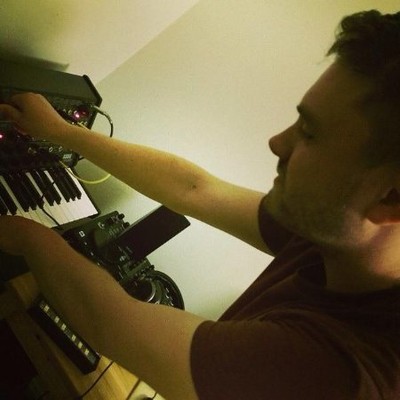
Si is the Managing Editor of Music Technology at MusicRadar and former Editor-in-Chief of Future Music, Computer Music and Electronic Musician. Si has been messing around with music tech in various forms for over two decades, using more studio monitors than he cares to remember. When he's not reviewing gear, you'll find him in the chillout room at raves complaining that it's past his bedtime.

Matt has been recording bands since the noughties, and has a wealth of experience with home studio monitoring and professional grade recording systems. He's used countless sets of monitors over the years, and is currently studying music production at Spirit Studios.

Jon is a London based platinum award winning mixer, producer, composer and club remixer with a diverse CV that spans dance, pop, rock and music for media. He’s also a long term contributor to MusicRadar's music technology tutorials and reviews. Whether working alone or collaborating he usually handles final mixdowns, so you’ll also find MusicRadar peppered with his handy mixing tips.

Andy has been writing about music production and technology for 30 years having started out on Music Technology magazine back in 1992. He has edited the magazines Future Music, Keyboard Review, MusicTech and Computer Music, which he helped launch back in 1998. He owns way too many synthesizers.
How we test
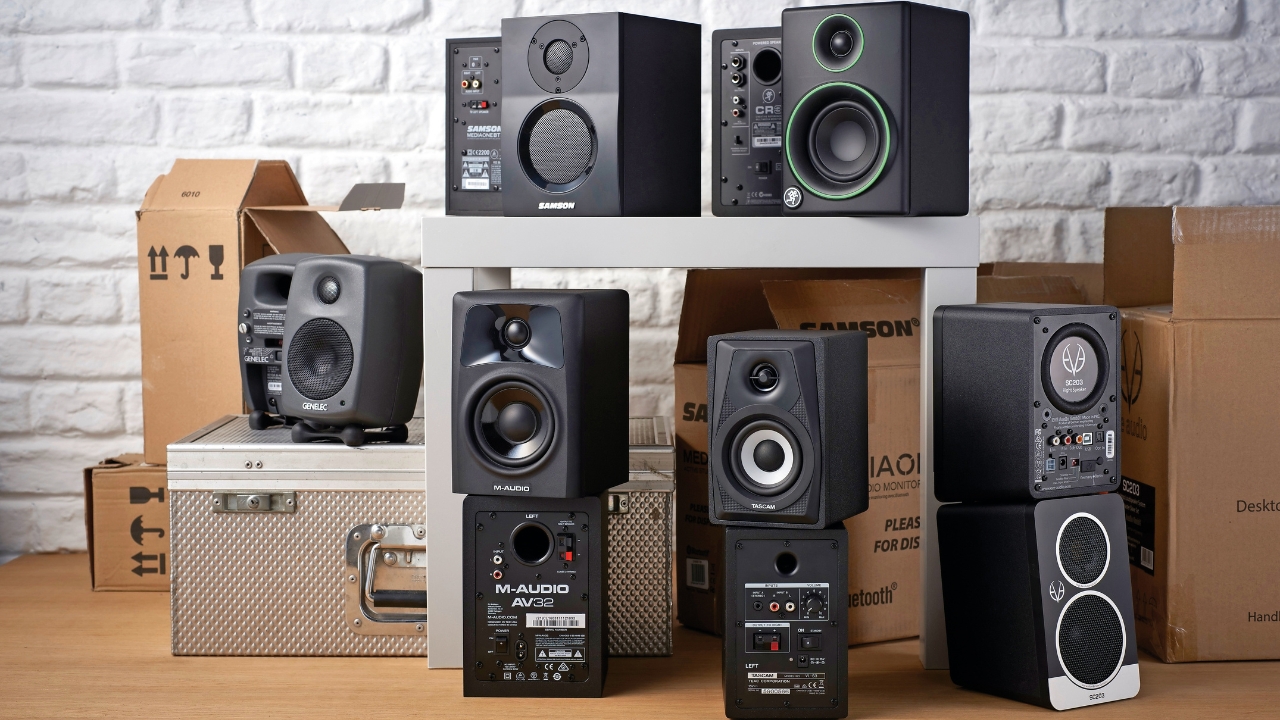
Similar to regular studio monitors, budget studio speakers should also deliver a reasonably truthful and uncoloured sound so what you hear is what the mix actually delivers and you can mix accordingly and correctly.
We test studio monitors in exactly the same way, whether they're a budget pair or not. Our first step is always to play some of our favourite reference mixes through the pair at varying volumes to see how they fare. We'll listen for how the low-end is coming through, whether there is any mud in the midrange or any harshness at the top of the frequency spectrum. These reference mixes will be varied, taking into account beautifully mixed songs in genres from hip-hop and EDM to metal and progressive rock.
Next, we'll try some actual mix moves on them, taking whatever piece of music we're currently working on and balancing it from scratch on the new set of monitors. We'll then add various EQs and compression to further refine the mix, before moving to more creative effects like reverb and delay. All the while we'll be flicking back and forth between our current main monitor pair for mixing (typically a much more expensive set) to see how they compare against one another.
With studio monitors it's important to bed in with them over a period of time. Here, first impressions don't count for much because what you're really testing is the ability to make a mix that will translate on a variety of different systems. So it's only through a lot of back-and-forth testing that you can accurately determine whether or not a pair of studio monitors is up to the task of assisting you in crafting your mixes.
Read more about how we test music making gear and services at MusicRadar.
Latest updates
19/02/25 - The guide has been given a top to bottom update with three new products added to the list and some older models removed. We've added a spec comparison, glossary, how to choose, and why trust us sections to further help readers, and completely refreshed the FAQs section too.
Related buyer's guides
- The best budget laptops for music production
- Check out our guide to the best budget PCs for music production
- Start recording today with the best budget audio interfaces
- Best budget studio headphones: performance on a smaller budget
- Our recommendations for the best budget in-ear monitors
- The best laptops for music production
Want all the hottest music and gear news, reviews, deals, features and more, direct to your inbox? Sign up here.
Chris Corfield is a journalist with over 12 years of experience writing for some of the music world's biggest brands including Orange Amplification, MusicRadar, Guitar World, Total Guitar and Dawsons Music. Chris loves getting nerdy about everything from guitar and bass gear, to synths, microphones, DJ gear and music production hardware.
- Si Truss
- Matt McCrackenJunior Deals Writer
- James GrimshawFreelance writer
